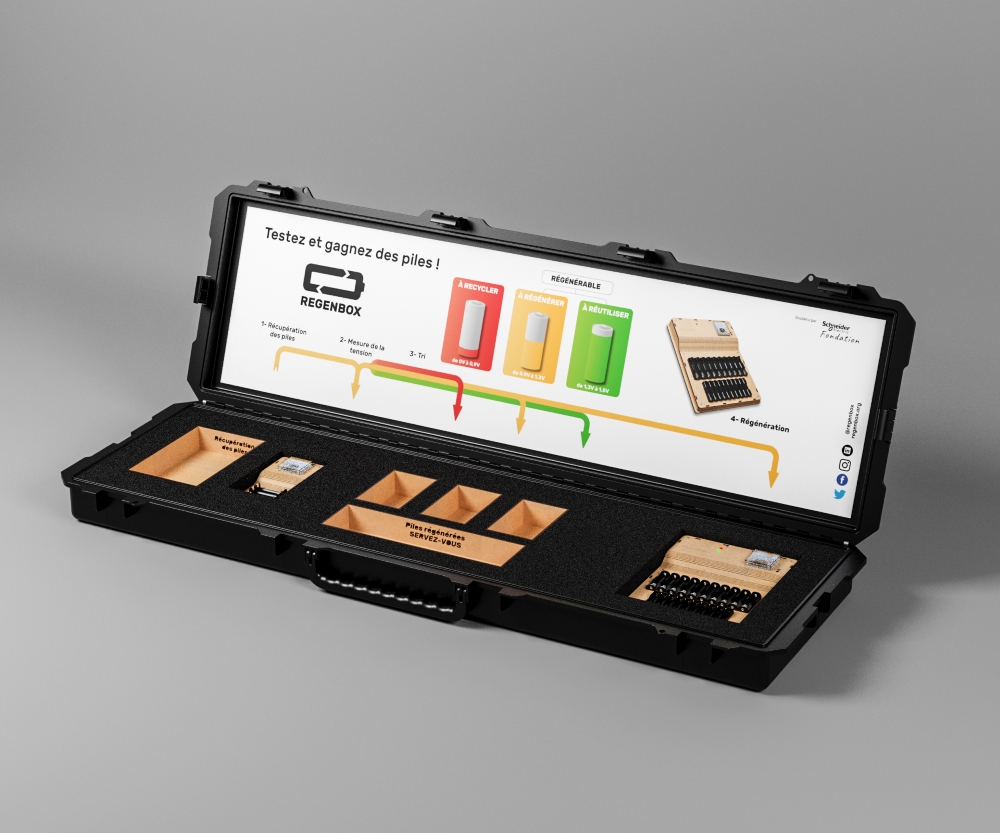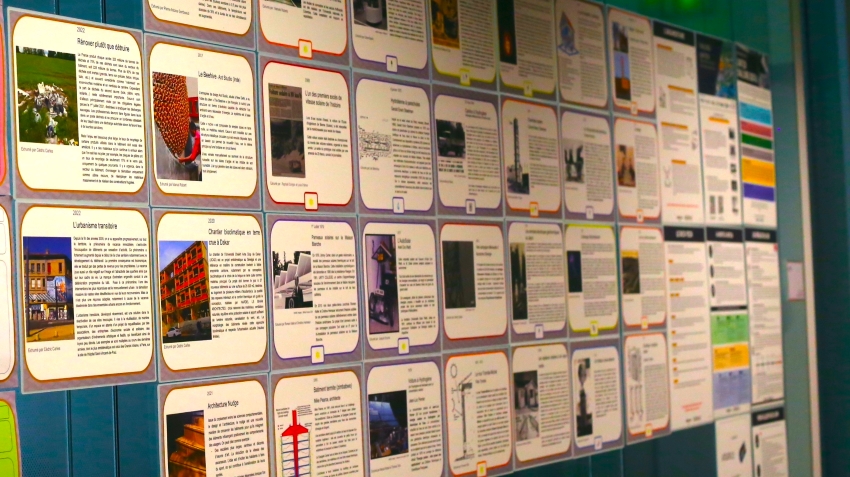How forgotten patents can inspire future design

by IBRAHIM
How forgotten patents can inspire future design
Design-led thinktank Atelier 21 on “exhuming” forgotten voices for a people-powered, low-tech design future.
“We are not anti-technology; we are fans of technology, “says Cédric Carles of the Paleo Energy Project, which works with the “retro-tech and low-tech” by way of rediscovering forgotten inventions and patents.
Led by Carles, a French-Swiss designer, the project is from design-led multidisciplinary research think tank and “citizen laboratory”, Atelier 21. Design Week spoke to Carles and team member and historian Loïc Rogard, ahead of the pair presenting their work at the 2023 Engadin Art Talks in Switzerland.
Starting in 2015, the team – made up of “designers, engineers, electricians, artists, DJs, a sound designer, archivist and historians” – has dug deep into archives around the world, bringing back to the surface thousands of inventions. “We exhumed a lot of pioneers, inventors, social innovations, science fiction and art that can help us face ecological transition”, Carles says.

“Our research shows that we have a collective amnesia”, he adds. “We forget about Maria Telkes, who had done this marvellous architecture working with solar energy in the 1930s”. He goes on to mention Dr. Paul MacCready, a scientist, inventor and aviator who invented a human-powered aircraft, and 19th century inventor Augustin Mouchot, who designed a machine to convert solar power into steam power: “a pioneer of a solar concentration system, but he died poor”, Carles says.
“I’m a designer, so I learned to make products and services, but when I realised that we are facing biodiversity loss, climate change, and a resources and water issue, I dedicated my work to not only finding solutions, but collective solutions”, Carles explains, adding that he hopes to inspire a greater number of “designers, engineers, politicians and investors”.
On the focus of simpler solutions, Carles explains: “The next step of innovations are frugal innovations, low-tech innovations. This is the business of tomorrow, because we are running out of resources”, he says.
Process

The standard worldwide is that patents expire 20 years after filing, then falling into the public domain. But even when publicly available, Rogard explains, it takes time to do the research. While they do make use of physical archives, the digitisation of collections and archives has made things easier. “With a keyboard you can find fantastic things from all around the world. Some days I go to the Library of Congress, or another day I’ll be researching in the UK”, he says.
By now the Atelier 21 team and an extended network of “Paleo-researchers” have unearthed “thousands of inventions, hundreds of graphics, patents and attempts,” Carles adds.
The information is shared in various ways: there is a website, the book, Retrotech & Lowtech (also published in French and Japanese), and the team also works directly with different groups – it could be a school, a large international company, or a politician – Carles explains.
Based on the notion of collective intelligence, the aim is not to give immediate solutions, but to let the client become part of the process. Atelier 21 creates a timeline of inventions, which might focus on the core area of solar energy or play to a particular concern, such as bio-gas solutions or bicycling systems, he explains. “We’ll have 20, 50 things to work with on the topic”, he says.

Then, they start to work with them on a longer basis. “The idea is that we are thinking long-term”, Carles says. “Sometimes someone asks us for a three-day workshop, and we say, no, it’s not three days in a week. It’s one day, then two months later another day…”, he says, explaining that this allows for them to “fuse intellectually with the companies. We leave the timeline on the wall for months so they can drink coffee and talk about it”.
For a project with the United Nations, they created an “Eco-lab, a sort of school in a shipping container”, a duplicate of which is being sent to the National School of Engineering in Conakry, Guinea. It contains objects, a timeline, and access to a “virtual museum”, which can also be found online, where inventions such as Mouchot’s solar concentrator have been 3D-modelled to help people get a closer look.
Collective Solutions
There is also a goal to develop practical outputs where possible. One example was a discovery that “one of the inventors of alkaline single-use batteries, Karl Kordesch[…] made a patent in the 70s for an invention to recharge non rechargeable batteries”, Carles says.

Carles explains that the alkaline battery market “is almost 20 million dollars a year”, and says that of France’s 30,000 tonnes of these batteries put into the market, “only half is recycled”. Even then, he adds, the recycling process is polluting and expensive.
After sharing the invention with their extended scientific community and participating in a hackathon, a simple product was developed called the Regenbox, which is able to charge and discharge batteries.

Atelier 21 then extended this into “collective solutions”, including a box to be placed in local businesses, where people can come and test their batteries, and be advised whether to recharge or leave them for recycling. A similar solution was developed for phone batteries too.
Knowledge sharing is much easier today, he adds. “It’s public domain, it’s open-source, and with all the movements of distributed design, fab labs and everything, it’s a powerful tool or taskforce to tackle climate change”.
“A person can do this”
Overall, the focus is on opening up possibilities. Against the sometimes-paralysing angst of climate catastrophe, the tools Atelier 21 offers look to suggest a way forward by showing what has been possible previously, with far lower tech than available today – even if the solution was not taken up. Against doubt and denial, Carles suggests, people can come to know “it is possible”.
Both the book, and the timelines are presented using the visual appeal and impact of “design tools”, Carles says, meaning they are light on text, but heavy on images, illustrations and diagrams.

Again, the focus is on people, and what they can do. Instead of each section of the book following the name of the invention, it has the name of the inventor.
“Climate change is abstract, energy is abstract, a megawatt hour is abstract, tonne equivalent CO2 is abstract”, Carles says.
“For the climate change revolution and transition, we need new perspectives, new collective talking, new narratives. If you talk only about infrastructure, people say, ‘it’s not me’, but if you talk about people that worked in this field, people can identify with them, and project into the future”.
Recommended Posts

NB invites local designers centre stage for Vineyard Theatre rebrand
February 24, 2023

“AI revolution” will change way design studios look within three years
February 24, 2023

Rbl rebrands ZSL with ecosystem-inspired identity
February 23, 2023

